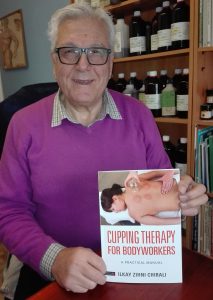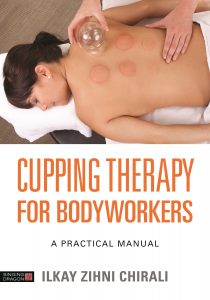As part of our Meet The Singing Dragon Author series, we speak to authors to discuss their motivation for entering their respective industries, inspiration for writing their books, what challenges they faced and who they would recommend their books to. Is there a specific Singing Dragon author you would like to hear from? Let us know in the comments or join the conversation using #MeetTheSDAuthor.
 Ilkay Zihni Chirali, author of Cupping Therapy for Bodyworkers
Ilkay Zihni Chirali, author of Cupping Therapy for Bodyworkers
How did you become interested in cupping therapy? Were there any challenges in entering this field?
I would not be exaggerating if I said that I was born into the cupping therapy world! My grandmother, who at the time was living with us in Lemba in Cyprus, was a renowned midwife and herbalist. She would often use this technique to treat the expectant mothers for their various complaints, including colds and muscular aches and pains. It was my mother’s duty – and, much later, mine – to wash and clean up the cups after each use. Later on in 1982, when I studied traditional Chinese medicine in Melbourne, Australia, to my surprise I discovered that cupping therapy is also part of the traditional Chinese medicine treatment tools. Needless to say I was so familiar with the techniques that our professor, Dr Wang, asked if I could assist him during the sessions!
The most challenging issue I came face to face with in cupping therapy are the marks left on the skin. Sometimes these can last up to two weeks! However, when applied correctly – by which I mean the most suitable cupping method to each individual’s case – the marks will be minimal, if any.
What inspired you to write the book?
In 1987 my family and I returned to the UK and I opened my first acupuncture and cupping therapy clinic, in Eltham, London. The following year, I began running “Practical Cupping Therapy” workshops in London as well as in Europe. A concise course handout was prepared for the participants, but I soon realised there was no cupping therapy book, in any language – including in Chinese. It just did not exist. Although the technique is often mentioned in traditional Chinese medicine textbooks, it is usually limited to a few pages. This is why I decided to write on the topic. My first book, ‘Traditional Chinese Medicine Cupping Therapy’, was published by Churchill Livingstone in 1999; the second edition in 2007 and the third in 2014. It has also been translated into six other languages.
What did you enjoy about writing the book?
During my research into cupping material for my book, I visited many libraries and hospital archives. It gave me immense pleasure to discover that cupping therapy was indeed used in many hospitals around the UK and in Europe alike, particularly during the 1800s. In the BBC2 historical documentary, ‘The Supersizers Go…, Elizabethan’, presented by Sue Perkins and Giles Coren, I got to demonstrate cupping application to Giles Coren for “cleansing the blood”, following the consumption of too much rich food.
To whom would you recommend the book?
Cupping Therapy for Bodyworkers is specifically written for bodyworkers, such as sports therapists, massage therapists, beauty therapists and for people interested in self application.
 Cupping Therapy for Bodyworkers
Cupping Therapy for Bodyworkers
A Practical Manual
Ilkay Zihni Chirali
Beautifully illustrated and thoroughly researched, this book explains how to use a variety of cupping techniques to treat a multitude of issues such as muscle tension, skin conditions or high blood pressure. Blending traditional medicine with practical advice, it is ideal for massage therapists, physiotherapists and beauty therapists everywhere.
Is there a specific Singing Dragon author you would like to hear from? Let us know in the comments or join the conversation using #MeetTheSDAuthor.
Join our mailing list to be the first to hear about our newest releases.